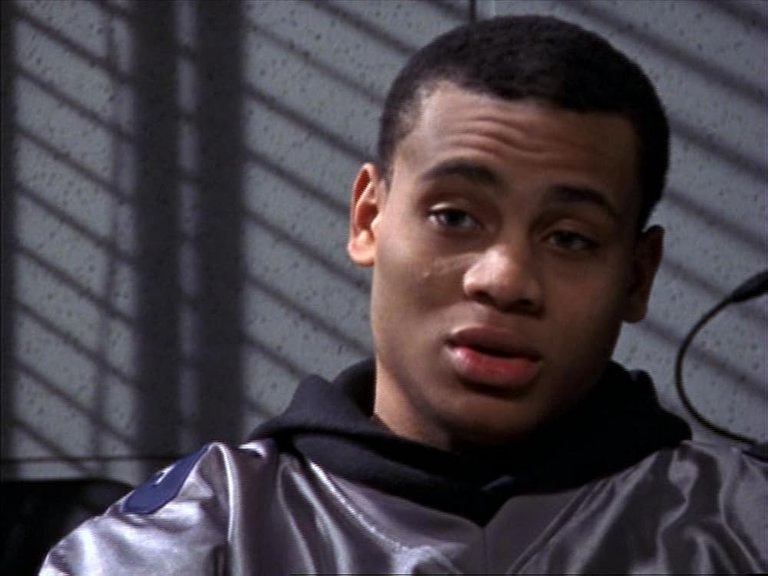Television Review: The Why Chromosome (Homicide: Life on the Street, S7X21, 1999)

The Why Chromosome (S07E21)
Airdate: 14 May 1999
Written by: Anya Epstein
Directed by: Kyle Secor
Running Time: 44 minutes
Homicide: Life on the Street, a series renowned for its gritty realism and unflinching portrayal of urban crime, faced an ironic misfortune in its final season. The show’s concluding episodes, including The Why Chromosome, inadvertently mirrored elements of the Columbine High School massacre, a national tragedy that gripped the United States in the spring of 1999. Though The Why Chromosome was not originally intended to echo such events, its plot—centred on the murder of a teenage girl near a school—unwittingly resonated with the trauma of Columbine. This episode, initially not slated as the penultimate instalment, became so after scheduling shifts forced by the abrupt cancellation of its predecessor, Lines of Fire, which was deemed too dark in the wake of the massacre.
The episode’s position as the penultimate story was not merely a matter of chronology but a consequence of logistical chaos. Originally, Lines of Fire, an episode was set to air prior to The Why Chromosome. However, after Columbine, producers feared its dark content might exacerbate public sensitivities, leading to its cancellation. Identity Crisis, another episode, was moved to fill the gap. Yet this reshuffling introduced continuity issues: Identity Crisis concluded with FBI Agent Mike Giardello resigning, a decision that contradicted his presence in both Lines of Fire and The Why Chromosome. While the DVD reordering later smoothed these inconsistencies, the initial broadcast left audiences confused about character arcs, underscoring the series’ rushed and disorganised finale.
The Why Chromosome follows Detectives Sheppard and Ballard as they investigate the brutal murder of Jackie Kelb, a 15-year-old Black girl found with the tattoo “Destiny” on her body. The case is notable for its rare focus on two female detectives—Ballard and Shepard—working independently of their male colleagues. Autopsy reveals Jackie was beaten days before her death and had sex shortly beforehand. The investigation leads to her sister, Tonya “Chrystal” Kelb (Samantha Brown), a gang member who initially resists cooperation. Meanwhile, Jackie’s relationship with Damon “Casper” Kelly (J. D. Williams), a teenage boy whose alibi crumbles under scrutiny, complicates the case. However, it is Kelly’s girlfriend, Denise “Neeecee” Raeburn (Cloie Wyatt Taylor), whose jealousy over Jackie’s affair with her boyfriend emerges as the primary motive. Before the detectives can apprehend her, Denise is found dead, leaving Tonya as the prime suspect, driven by a desire to avenge her sister’s death. The episode concludes with Tonya’s arrest and a possible plea for manslaughter, though her sudden decision to abandon her gang lifestyle hints at unresolved tensions.
Written by Anya Epstein, The Why Chromosome stands out as one of Homicide’s most overtly feminist episodes. It examines how women, both in the police force and on the streets, navigate and are constrained by gender stereotypes. Ballard and Shepard’s collaboration—uncommon for the series, which often paired male-female duos—reflects the underrepresentation of female leads in policing. Meanwhile, the Kelb sisters embody the destructive mimicry of male aggression. Raised in a gang environment, they adopt tattoos, tough postures, and a “solve conflicts through violence” ethos, proving that girls can be as ruthless as their male counterparts.
The episode’s most haunting element is the portrayal of the Kelb family’s disintegration. Their mother, Janice, played by Starr Walker, is a passive figure incapable of curbing her daughters’ descent into gang life or protecting their youngest sister, Rochelle. The youngest, just 11, is groomed for a similar fate, perpetuating a cycle of abuse that began with her father’s physical violence. However, a fleeting moment of hope emerges when Tonya, during an attempted escape, warns Rochelle not to follow her path. This epiphany, though brief, suggests a fragile possibility of breaking the cycle—a rare glimmer in an otherwise bleak narrative.
The episode’s weakest element is its subplot involving Detective Munch and his fiancée, Billie Lou. Their impending wedding is overshadowed by Billie Lou’s request for Munch to help her neighbour, stalked by her ex-boyfriend Jay Faris (played by Eric Red Schroeder). Munch’s intervention backfires when the ex-attacks Billie Lou at a bar, leading to his arrest. The subplot, though well-intentioned, feels tonally mismatched and poorly executed. Its focus on pre-marital squabbles and minor harassment dilutes the gravity of the main storyline, which could have delved deeper into the complexities of the Kelb sisters’ lives.
Had Epstein prioritised the main narrative over the Munch subplot, The Why Chromosome could have been more impactful. The relationships between the female gang members—particularly the tensions between Jackie and Denise—are underdeveloped, reduced to montage sequences and convenient Polaroid evidence. A more nuanced exploration of their motivations, rivalries, and the pressures of gang culture might have deepened the episode’s critique of gender and violence. Instead, the subplot’s presence undermines the potential for a more cohesive, emotionally resonant story.
Despite its flaws, The Why Chromosome remains a compelling entry in Homicide’s canon. Its strength lies in its performances, particularly J. D. Williams as Damon “Casper” Kelly. His confident, almost smug portrayal of a teenage male who mocks female detectives during interrogation foreshadows his iconic role as Bodie in The Wire. Williams’ ability to embody both arrogance and vulnerability makes his character memorable, even in a secondary role.
The Why Chromosome is a flawed yet potent episode, hampered by external circumstances and narrative missteps but elevated by its feminist themes and standout performances. Its accidental parallels to Columbine and internal continuity issues serve as a reminder of the precarious balance between art and real-world tragedy.
RATING: 6/10 (++)
Blog in Croatian https://draxblog.com
Blog in English https://draxreview.wordpress.com/
InLeo blog https://inleo.io/@drax.leo
LeoDex: https://leodex.io/?ref=drax
Hiveonboard: https://hiveonboard.com?ref=drax
Rising Star game: https://www.risingstargame.com?referrer=drax
1Inch: https://1inch.exchange/#/r/0x83823d8CCB74F828148258BB4457642124b1328e
BTC donations: 1EWxiMiP6iiG9rger3NuUSd6HByaxQWafG
ETH donations: 0xB305F144323b99e6f8b1d66f5D7DE78B498C32A7
BCH donations: qpvxw0jax79lhmvlgcldkzpqanf03r9cjv8y6gtmk9